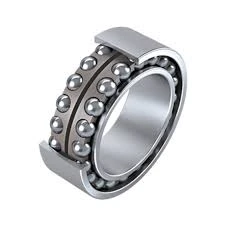
Dec . 21, 2024 16:46 Back to list
taper roller bearing assembly
Understanding Taper Roller Bearing Assembly
Taper roller bearings are crucial components in various mechanical systems, primarily because they successfully handle both axial and radial loads. Their unique design allows them to support high capacity while maintaining performance efficiency. In industries ranging from automotive to manufacturing, the assembly of tapered roller bearings plays a pivotal role in ensuring operational reliability.
Design and Construction
Taper roller bearings consist of an inner ring (cone), an outer ring (cup), taper-shaped rollers, and a cage that keeps the rollers separated. The tapered shape of the rollers allows them to make contact with both the inner and outer rings at a single line of contact, enabling the distribution of loads through a larger area. This design minimizes friction and wear, which is essential for the longevity of the bearing itself.
The angle of the taper is critical; it determines the bearing’s load-carrying capacity and its axial and radial operational characteristics. Ideally, the angle allows the rollers to maintain contact with the raceways, enhancing stability and performance under various loads.
Types of Taper Roller Bearings
There are several types of taper roller bearings, including single-row, double-row, and four-row configurations.
1. Single-row taper roller bearings are the most common and are designed to handle moderate to heavy radial and axial loads in one direction. 2. Double-row taper roller bearings can accommodate axial loads in both directions, making them ideal for applications where forces work from both ends.
3. Four-row taper roller bearings are robust and engineered for even heavier loads, often used in large machinery such as rolling mills or mining equipment.
Assembly Process
The assembly of taper roller bearings is a meticulous process that requires precision and attention to detail
. Here are the typical steps involvedtaper roller bearing assembly

1. Preparation of Components All parts – the inner ring, outer ring, rollers, and the cage – should be cleaned and inspected for any defects before assembly. This is crucial since any debris can affect the bearing’s performance and longevity.
2. Positioning the Inner Ring The inner ring is usually mounted first. It may require heating to expand and facilitate a smooth fit over the shaft.
3. Insertion of Rollers Once the inner ring is in place, the cage with rollers is assembled next. The alignment of rollers is key for balancing load distribution.
4. Mounting the Outer Ring After the cage and rollers are positioned correctly, the outer ring is installed. This step may also involve precise heat treatment or methods to ensure an appropriate fit.
5. Verification of Clearances Post-assembly, proper axial and radial clearances must be measured and adjusted to ensure optimal performance. This step greatly influences the bearing's operational efficiency and lifespan.
6. Lubrication Finally, the bearing is lubricated using grease or oil as per manufacturer recommendations, which helps in reducing friction and heat generation during operation.
Importance and Applications
Taper roller bearings are widely used in numerous applications, including automobile wheel hubs, gearboxes, and heavy machinery. Their ability to handle high loads while operating smoothly under various conditions makes them indispensable in modern engineering.
In the automotive industry, they ensure smooth rotation of wheels and axles, contributing to vehicle safety and performance. In industrial equipment, taper roller bearings provide the necessary support for shafts and help achieve precise motion and alignment.
Conclusion
The assembly of taper roller bearings is a fundamental aspect of mechanical design and engineering. Understanding their structure, assembly process, and applications provides insight into how these components contribute to the efficiency and reliability of various machines. As technology continues to advance, the demand for high-quality, durable taper roller bearings will only grow, making their proper assembly even more critical for ensuring performance across diverse industries.
Latest news
-
Premium Deep Groove Ball Bearings | High Speed & Reliability
NewsAug.29,2025
-
Durable Scaffolding Clamps - Secure & Reliable Tube Connectors
NewsAug.28,2025
-
Common Failures in Thrust Ball Bearings and Solutions
NewsAug.22,2025
-
How Tapered Roller Bearings Can Take Shock Loads
NewsAug.22,2025
-
Angular Bearings in High-Precision Spindles
NewsAug.22,2025
-
The Impact of Misalignment on Cylindrical Roller Bearing Performance
NewsAug.22,2025
